A compelling value proposition is critical to sales success. It can, without a doubt, make or “brake” a sale and is often the root cause when new products or solutions fail to reach their destination. Without a clear value map or an understanding of “what’s in it for them,” prospects have little reason to invest in your offering.
Improving the quality of your value propositions, and including them in your sales process, is essential for growing sales and customer satisfaction. The most persuasive value propositions address the needs of the market segment, companies, and role-based individuals involved in evaluating and selecting your product. Incorporating these perspectives into your value statement will help your sales representatives close more sales and gain an advantage in competitive situations.
1st Avenue | Segment-Specific Value
Any successful value proposition speaks directly to a customer in a specific market segment, using simple words and familiar language. Because business value is in the eye of the beholder, B2B sales and marketing professionals must communicate exactly how their solution addresses a segment’s unique business concerns. Speaking in buzzwords and broad, generic terms does little to open doors and actively engage customers on their level. It also makes access to key stakeholders and decision makers harder.
Think about the language commonly used to convey value. What does it mean to say a solution “improves performance?” Does it simplify operations and improve productivity? If so, say it. Likewise, if a service helps organizations “achieve a high return on investment,” what’s the value for a non-profit institution? Perhaps it creates efficiencies that improve the organization’s results and improve public perception. Whatever it does, be specific!
Follow this route to sharpen your value propositions by communicating explicit value for every market segment.
3 Steps for Determining Segment Value
1. Identify the market segment(s) you want to target.
2. Document the primary issues and concerns of customers within the segment. Examine and understand them from the customer point of view.
3. Articulate the benefits your solution can deliver in ways that specifically address each concern.
2nd Avenue | Company-Specific Value
If you effectively communicate your value proposition at the market segment level, you can drive the sale forward by helping to build a business case for the entire organization. Unfortunately, many vendors lack a structured approach to this phase of the sale. Without a clear definition of company-specific value, sales representatives “wing it” with generic presentations and half-baked analyses. The result? Lower close rates, greater discounting pressure, and more time spent in pre-sales activities.
Now is the time to persuade the organization that your solution delivers these revenue-enhancing, cost-reducing, and other strategic benefits. This is accomplished with a business value framework that articulates how these benefits will be achieved, in terms the company will recognize. You can strengthen the conversation with customer evidence that demonstrates real-world results.
Quantifying company-specific value leads to a more concrete business case that accelerates the buying process and eliminates the need for price discounting and excessive negotiations. Follow this route to help your sales reps guide their prospect to the next phase of the buyer journey and to close more deals.
3 Steps to Determining Company-Level Value
- Identify specific ways your solution will increase company revenues and reduce costs.
- Articulate the strategic benefits associated with introducing your solution.
- Provide customer evidence to support the business benefit claims.
3rd Avenue | Role-Based Value
Role-based value is a powerful motivator for closing deals and accelerating solution adoption. People buy from people, so it’s important that your sales representatives establish trust and confidence by making well-researched presentations that directly address the needs of the customer segment, company, and individuals approving and using your solution.
Individuals often have very different value perspectives, so it’s essential to understand who is involved in making the purchasing decision, what role they play in the company, and how they will uniquely perceive the value of your solution. For example, what’s important when selling to the CFO versus the VP of Marketing can be fundamentally different. It’s also possible that one can have a more negative view of your solution than the other. Ultimately, sales representatives must address these differences and communicate “what’s in it for me” for every stakeholder involved in the buying process.
Successful vendors help their sales reps meet this challenge with strong sales aids that are developed and validated through role-based research. This helps them navigate the account more effectively, talk to the right parties, and tailor value-based conversations to the individuals making buying decisions. Follow this route to bring the sales process to a favorable conclusion.
3 Steps to Determining Role-Based Value
- Identify the key individuals involved in making or influencing the buying decision.
- Define each stakeholder’s role, responsibilities, and key challenges. Establish how your solution addresses specific challenges and supports each stakeholder in meeting their responsibilities.
- Determine how each stakeholder will perceive personal value associated with your solution. Clearly articulate these personal perspectives in your business value framework.
Conclusion
A persuasive value proposition is where “the rubber meets the road” to drive sales success. Applying these value perspectives requires preparation, solid research, and working with the right people. Your core team should include stakeholders in marketing, sales, and delivery, so that all perspectives are included.
Although development can be completed in a few months, the process can be accelerated and improved with the support of an experienced consultant. Taking advantage of a value selling approach can result in greater sales success, and more effective sales, marketing, and delivery alignment.
Before making your next sales presentation, evaluate how well your company is developing compelling value propositions, and how they are leveraging sales tools to present that value. If they are not already a core part of your sales process, consider how your sales representatives are hindered in their ability to close sales. And if you’re already focused on selling the value of your solution, consider applying these value perspectives to drive greater sales success.















